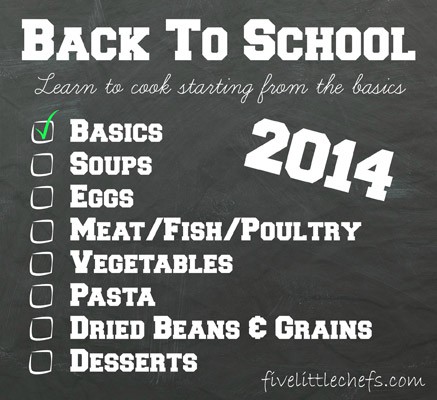Herbs are a great way to add flavor to your food. They can be used fresh or dry. Herbs are divided into two categories, tender and robust. We will learn about 8 common herbs.
When I was teaching my Little Chefs about these herbs, we got to the bay leaf and they said remembered when we were eating with Grandma, Grandpa and Great Grandma and we had the stew and Great Grandma found the leaf. She took it out because we don’t eat that. Now they know it is called a bay leaf and they know from experience it is not to be eaten, and they know that it is used to season stew at the beginning. These experiences though small are what helps them remember what they are learning.
A tender herb is added at the end of cooking.
A robust herb is added at the beginning of cooking and can withstand long cooking times.
Basil
- Tender herb.
- Green and leafy.
- Fragrant, slightly sweet.
Bay Leaf
- Robust herb.
- Leaves are usually whole and dried.
- Used in stocks, soups and sauces. Remove before serving because they are bitter if eaten.
Chives
- Tender herb.
- Long leaves are round and hollow.
- Common garnish. Adds a bright flavor to dips and salads.
Cilantro
- Tender herb.
- Small, round and delicate leaves with long stems.
- Common in Latin American and Asian cooking. Flavor stands up to spicy foods.
Dill
- Tender herb.
- Long and wispy without well-defined leaves.
- Common in salads, soups and sauces. Pairs well with fish.
Parsley
- Tender herb.
- Curly or flat.
- Stands up well to heat in stews and sauces.
Rosemary
- Robust herb.
- Thin leaves like pine needles.
- Woody smell. Paired commonly with garlic.
Sage
- Robust herb.
- Medium sized, velvety leaves.
- Paired with sausage, poultry, white beans, stuffing. Long cooking times mellows the bitter taste.
Thyme
- Robust herb.
- Small leaves, grow on sprigs.
- A versatile herb. Used in poultry, fish, vegetables, stuffings, soups, stews and sauces.
For even more information about herbs read pages 16-23 in the Martha Stewart’s Cooking School Cookbook.
Assignment:
- Print the review sheet. Cut along the lines. Match the herb to the description. Check your work.
- Go to the grocery store and identify the herbs you see.
- Print the assignment to review your knowledge.
- Read a little more about basil.



No Replies to "Herbs"